Premise Plumbing Decontamination and Exposure Pathway Assessments
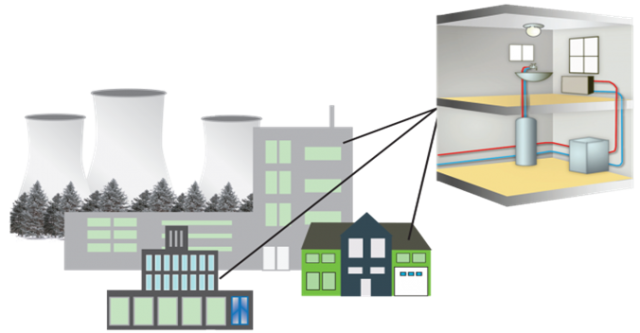
Like drinking water utility infrastructure, premise (home or building) plumbing can become contaminated with chemical, biological, or radiological agents after an intentional or accidental contamination event. The water utility is responsible for decontaminating the drinking water distribution system up to the service connection to the home or building. The homeowner or building owner is responsible for the service line and the premise plumbing system. EPA conducts research on contaminant persistence and decontamination of premise plumbing so that home and building owners have tools to make informed decisions about cleaning their pipes and appliances or replacing them.
Research on this page:
- Biological Agent Modeling
- Model Premise Plumbing Systems
- Decontamination Technologies and Strategies
Biological Agent Modeling
To conduct decontamination research, EPA typically uses model organisms and pathogen surrogates to reduce risks of downstream contamination of water infrastructure and laboratory hazards.
Spore forming pathogens
Use of Bacillus anthracis, the causative agent of anthrax, in experimental studies is highly restricted as it is classified as a Tier 1 Select Agent due to its prior use as a bioterrorism agent and severe threat to human health. Thus, B. anthracis surrogates, such as B. atrophaeus subspecies globigii, B. thuringiensis, and B. cereus, can serve as model spore-forming biological agents that EPA uses in fate and transport and decontamination studies within its water distribution and premise plumbing test systems. Bacillus species are endospore forming bacteria that are ubiquitous in nature. Given the enhanced resistance of spore-forming bacteria to common disinfectants and their prolonged survival in unfavorable environmental conditions, research into their fate and transport and decontamination in drinking water systems is a high priority due to the risks of natural contamination or intentional distribution in those systems.
Non-spore forming vegetative pathogens
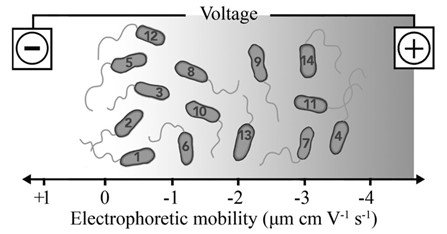
Legionella pneumophila is a bacterium that can cause Legionnaires’ Disease, a potentially fatal form of pneumonia, or Pontiac Fever, a milder, flu-like illness. L. pneumophila is subdivided into serogroup (sg) 1 to 15 based on its reactivity to the Dresden panel of antibodies. These antibodies recognize distinct epitopes on the bacterial lipopolysaccharide (LPS) molecule on their surfaces.
Legionella infections are caused by the inhalation of contaminated aerosols generated from showers, humidifiers, faucets, decorative water fixtures, and cooling towers. L. pneumophila, and other Legionella species, are stable and persistent within large building and residential plumbing systems, making these organisms an ideal model species to evaluate drinking water infrastructure and premise plumbing decontamination strategies for vegetative biological agents in general.
EPA’s previously published research indicated that the variability in the surface charge between the L. pneumophila serogroups may play a role in their ecological distribution and survival within drinking water infrastructure. Based on the study’s results, it may be possible to modify different engineering and water quality aspects of drinking water systems (e.g., plumbing material, water chemistry) to exploit the bacterial surface properties in order to control and limit their occurrence in these systems.
Model Premise Plumbing Systems
It has been well-established that water quality within the distribution system is significantly different than that within premise plumbing. This is due to factors such as higher water stagnation times, higher surface area to water volume ratios, more complex plumbing configurations, and variable water usage patterns, all of which contributes to increased rates of disinfectant residual decay and reactions with plumbing material and fixtures. To evaluate premise plumbing water quality, contamination, and subsequent decontamination, EPA has built various model premise plumbing systems to assess the extent of different contamination scenarios within these systems and how best to bring the systems back to service.
Water Security Test Bed Research
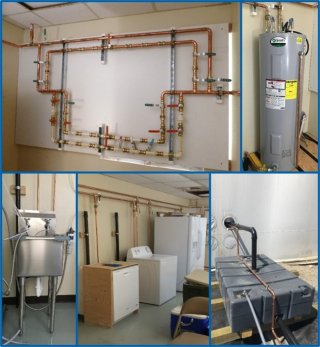
EPA’s Water Security Test Bed (WSTB) includes a home plumbing and appliance setup. A home water service connection feeds water to a water meter, plumbing pipes, and common appliances such as a hot water heater, refrigerator, dishwasher, washing machine, and utility sink (pictured at right). In several studies, the pipe and appliance have been contaminated with biological agents, oil pesticides and other contaminants. The effectiveness of flushing the pipes and running the appliances with and without soap as decontamination methods has been evaluated.
Access reports and articles that describe this research and results.
Test & Evaluation Facility Research
A full-scale premise plumbing system, located in EPA’s Test and Evaluation Facility, will be used to study microbial and chemical water quality parameters that could impact contaminant fate and transport. This premise plumbing system, pictured at right, consists of various hot water heater (HWH) types, six faucets, a shower room with a faucet and three toilets, and two additional outlets that can be used to mimic a dishwasher, washing machine, or other types of common appliances.
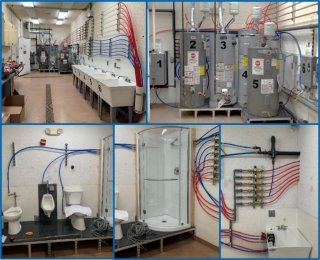
The hot and cold water pipes throughout this full-scale system are made up of three common plumbing materials (copper, PEX, and PVC) in equal lengths and proportions. There are six HWHs: three gas and three electric powered, with each group consisting of two tanks and one tankless (or instantaneous) HWH type. This entire system, and components therein, are used to monitor water quality, contaminant behavior, and efficacy of different decontamination strategies during various water usage patterns and stagnation periods.
EPA’s previously published research has shown that the Test and Evaluation Facility is naturally contaminated with various opportunistic pathogens such as Legionella pneumophila, mycobacteria, and free-living amoeba. Results showed the presence of a diverse Legionella population that either occurred consistently or sporadically depending on the location within the facility.
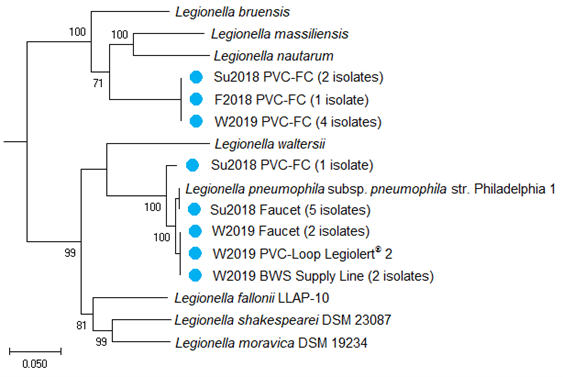
Decontamination Technologies and Strategies
Efficacy of disinfectants is usually based on pathogen inactivation in their planktonic, free-floating forms. However, most drinking water microorganisms reside within biofilms that are abundantly distributed on pipe walls and within plumbing fixtures. Biofilms protect pathogens from environmental stress, provide easier access to nutrients, and allow opportunities for beneficial interactions with other microbes that may result in the pathogen’s prolonged survival and amplification in drinking water systems.
EPA’s previously published research evaluated the efficacy of two common, secondary disinfectants, free chlorine and monochloramine, on biofilm-associated Legionella pneumophila on two common plumbing materials, copper (Cu) and polyvinyl chloride (PVC).

Current and future research will evaluate decontamination of premise plumbing targeting the various drinking water matrices that are the sources of human exposure such as aerosols, bulk water, and biofilms utilizing metal biocides, UV-C LED devices, biofilm control and prevention strategies, regular flushing, and emerging water treatment technologies.
